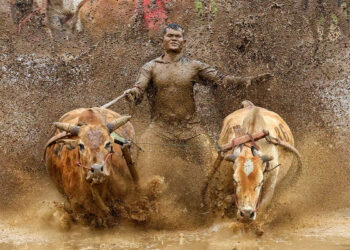In the vast and visually overwhelming realm of Indian street photography, Suresh Naganathan stands out not by amplifying the chaos, but by revealing its quiet poetry. Based in Mumbai, Suresh has earned recognition in both national and international street photography circles for his minimalist yet emotionally charged work. His photographs are often intimate and subdued, marked by subtle gestures, nuanced human interactions, and moments of quiet tension.

Unlike the conventional flood of colors, crowds, and noise that typically characterize Indian street scenes, Suresh’s lens finds meaning in silence, form, and space. His unique vision continues to shape contemporary Indian street photography with an aesthetic that is both emotionally resonant and compositionally refined.
Scroll down and inspire yourself. You can check Suresh’s Instagram link for more amazing photos.
You can find Suresh Naganathan on the web:
#1

#2

#3

A Different Eye: What Sets His Photography Apart
What truly distinguishes Suresh Naganathan’s work is his ability to slow down time in an environment that is perpetually moving. His images are not about spectacle—they are about observation. He avoids dramatic street theatrics and instead hones in on small, deeply human gestures: a fleeting glance, a hand in motion, a moment of stillness amid movement.
There’s an understated visual poetry in his photos, often allowing ambiguity and interpretation to fill the frame. His work leans into complex emotional undertones, showing the street not as a loud narrative, but as a quiet canvas full of layered meaning.
#4

#5

#6

Composition as a Meditative Practice
Suresh approaches composition with a painterly sensibility. His use of light, shadow, negative space, and framing is deliberate and minimal, often drawing the viewer’s eye to a single element that carries emotional or symbolic weight. He often uses environmental geometry—walls, windows, staircases—to create structure and tension within the frame.
In his compositions, every object and subject feels intentional, allowing room for reflection. It’s not just about what is seen, but about what is suggested or left out. This restraint makes his photos quietly powerful, often resembling visual haikus rather than loud narratives.
#7

#8

#9

Indian Streets Through a Subtle Lens
Indian street photography is often associated with riotous colors, festivals, noise, and dramatic juxtapositions. Suresh Naganathan takes the opposite route. His India is one of ambiguous emotions, delicate balances, and honest everyday moments. He captures the country’s layered complexity not through spectacle but through intimacy.
His subjects are rarely performing for the camera; they are immersed in their own world, giving the viewer the sense of being an invisible observer. His photographs are a meditation on urban life, routine, isolation, and fleeting human connections, often shot in neutral or subdued tones that resist exoticization.
#10

#11

#12

Philosophy Over Aesthetics
For Suresh, photography is not just a visual practice—it’s a philosophical exploration of time, space, and human presence. He believes in spending time in a place without expectations, allowing images to emerge naturally rather than chasing them. His approach echoes the ethos of classic street photographers like Saul Leiter and Raghubir Singh, but updated with his own introspective style. There’s a contemplative stillness in his frames—an invitation to the viewer to pause, reflect, and find beauty in the mundane.
#13

#14

#15

A Rising Voice in Contemporary Street Photography
Though not as commercially publicized as some of his peers, Suresh Naganathan’s work has garnered serious respect in the street photography community. He has exhibited his work internationally and participated in collectives and online platforms that celebrate quiet, observational photography.
His thoughtful visual essays and consistent body of work have made him a leading voice in the evolution of modern Indian street photography, appealing to audiences who seek depth and reflection over spectacle.
#16

#17

#18

Conclusion: The Poetry of the Everyday
Suresh Naganathan doesn’t photograph the street to impress—he photographs it to understand and share its soul. His visual language is one of restraint, clarity, and honesty. At a time when street photography often trends toward dramatic visuals and viral moments, Suresh’s work reminds us of the quiet strength of subtlety.
His frames are soft-spoken stories—whispers of human presence in the architecture of everyday life. Through his lens, the Indian street becomes not just a place of color and movement, but a space of intimate wonder and emotional resonance.
#19

#20

#21

#22

#23

#24

#25

#26

#27

#28

#29

#30











